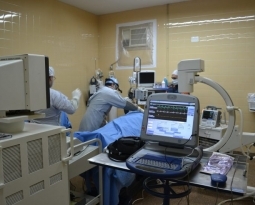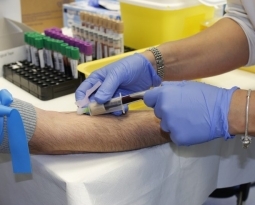Colorado Patent of the Month – April 2024
Pathware Inc. has introduced an innovative method for assessing biological samples that promises to revolutionize cytopathology. This cutting-edge approach, known as the near-field Fourier ptychographic system, combines advanced microscopy techniques with computational imaging algorithms to provide detailed insights into biological specimens.
At the heart of this method lies the characterization of a speckled pattern, which is applied by a diffuser to illuminate the biological sample. By positioning the sample relative to at least one light source, the system diffuses light in a speckled pattern either before or after it interacts with the sample. This diffused light is then captured by a sensor, generating a series of illuminated images embedded with the speckle pattern.
Through the iterative reconstruction and stitching together of these images, a whole slide image of the biological sample is created. This comprehensive image allows for the identification of various features, including cell count, nuclei, edges, groupings, and clump size.
Key to the system’s success is its ability to capture images at multiple wavelengths, ranging from 100 to 700 nanometers. This broad spectrum of electromagnetic radiation enables detailed analysis of the sample’s molecular composition.
The system offers flexibility in capturing images with overlapping regions, facilitating seamless stitching and ensuring complete coverage of the sample area. Utilizing a negative channel metal oxide semiconductor sensor, the system captures grayscale intensity with remarkable precision, enhancing image quality and detail.
To further enhance its capabilities, the system incorporates motion control devices for precise sample positioning and focuses diffused light onto the sample using a condenser. Additionally, machine learning and deep learning models are employed to assess sample adequacy and classify regions of interest based on various criteria.
Are you developing new technology for an existing application? Did you know your development work could be eligible for the R&D Tax Credit and you can receive up to 14% back on your expenses? Even if your development isn’t successful your work may still qualify for R&D credits (i.e. you don’t need to have a patent to qualify). To find out more, please contact a Swanson Reed R&D Specialist today or check out our free online eligibility test.
Who We Are:
Swanson Reed is one of the U.S.’ largest Specialist R&D tax advisory firms. We manage all facets of the R&D tax credit program, from claim preparation and audit compliance to claim disputes.
Swanson Reed regularly hosts free webinars and provides free IRS CE and CPE credits for CPAs. For more information please visit us at www.swansonreed.com/webinars or contact your usual Swanson Reed representative.

















